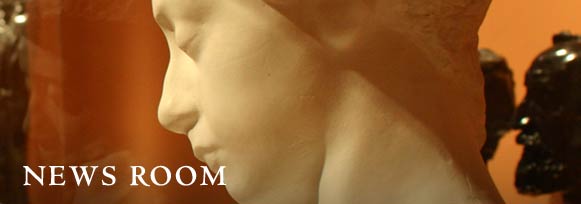Paintings on Loan from the Smithsonian American Art Museum:
"Women on the Verge: The Culture of Neurasthenia in 19th-Century America"
October 20, 2004–February 6, 2005
Stanford, CA, April 20, 2004—The Cantor Arts Center at Stanford University presents Women on the Verge: The Culture of Neurasthenia in 19th-Century America, from October 20, 2004 to February 6, 2005. This exhibition features paintings from the Smithsonian American Art Museum in Washington, D.C., including works by Thomas Eakins, J. Alden Weir, Thomas Wilmer Dewing, and other preeminent American artists of the 19th century.
The exhibition examines how women were perceived and portrayed during the mid and late 1800s, and how certain types of representations were linked to the national preoccupation with nervous illness or "neurasthenia" that arose in the second half of the century. The belief that full schedules, machinery noise, and other aspects of modern industrial society had a detrimental effect on mental health became increasingly common after the Civil War. By the last two decades of the century, medical authorities claimed that neurasthenia, a new malady of modern life, had reached epidemic proportions in the United States.
Paintings of women manifesting the physical signs of nervous illness were an important component of the culture of neurasthenia that evolved at the turn of the century. Though these portrayals usually avoided explicit reference to the disease, the sad eyes, slouched posture, and general lassitude of the subjects were immediately recognizable to contemporary audiences as markers of neurasthenia. The paintings usually depicted women of the upper class, who were shown as they reclined and ruminated in elegant interiors, gazing into space with expressions that communicated dreaminess, boredom, and melancholy. Such portrayals helped to imbue the illness with the cachet of the social elite, as well as to define it as an affliction of women. At the same time, the focus on the interior states of sedentary female subjects was an arresting counterpoint to the forward-looking ethos of an American citizenry that defined itself as a "locomotive people."
In addition to the paintings in the exhibition, Women on the Verge also includes a selection of prints and advertising images, from other sources, depicting females at work and engaged in athletic activities—the kinds of pictures the American public often viewed side by side with images of "nervous" women. By the 1890s, pictures of women's suffrage rallies were a regular feature in newspapers, and popular magazines were filled with pictures of the fashionably sporty, full-bodied "All-American Girl." The exhibition explores the curious dynamic between images of refined and delicate ladies and those that celebrated women's new social and physical freedoms.
Women on the Verge is jointly organized by Claire Perry, Curator of American Art at the Cantor Arts Center; Amanda Glesman, a doctoral candidate in the Department of Art and Art History at Stanford; and Katherine Williams of the Women's Wellness Clinic at Stanford Hospital. An illustrated catalogue accompanies the exhibition. The exhibition, accompanying catalogue, and related programs are made possible by an anonymous donor and the Halperin Exhibitions Fund.
Lecture Series to Accompany Women on the Verge
Thursday, October 28
6 pm, Center Auditorium
"'Wan, Haggard Faces' and 'Hollow Cheeks': The Collapsing Female Aesthete in Victorian Art"
Susan Casteras, Professor of Art History, University of Washington
Wednesday, November 10
4:15 pm, Center Auditorium
Lecture by Kathleen Spies, Assistant Professor of Art History, Birmingham-Southern College
Both lectures are free and open to the public; seating is limited.
Related Programs:
Free Spotlight Talks:
Thursday, November 4; 7:15 pm; in the gallery
Hysterical Angels: Feminist Re-readings of Hysteria and Domesticity
Nora Niedzielski-Eichner, Stanford art history graduate student
Saturday, November 13; 2 pm; in the gallery
Restless Rest Cure: The Women of Thomas Wilmer Dewing
Annelise Madsen, Stanford art history graduate student
Visitor Information: The Cantor Arts Center is open Wednesday–Sunday from 11 a.m. to 5 p.m., Thursday until 8 p.m. Admission is free. The Center is located on the Stanford University campus off Palm Drive, at Lomita Drive and Museum Way. For information, call 650-723-4177.



